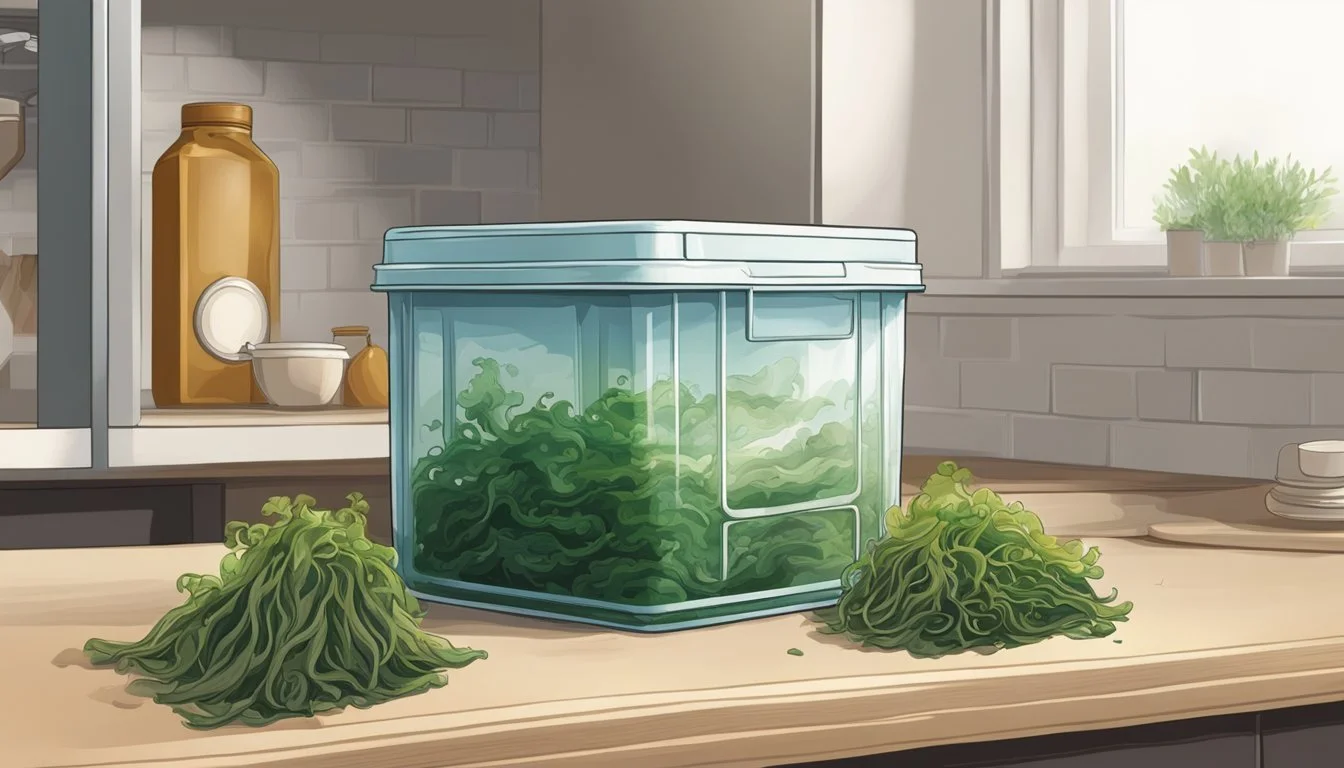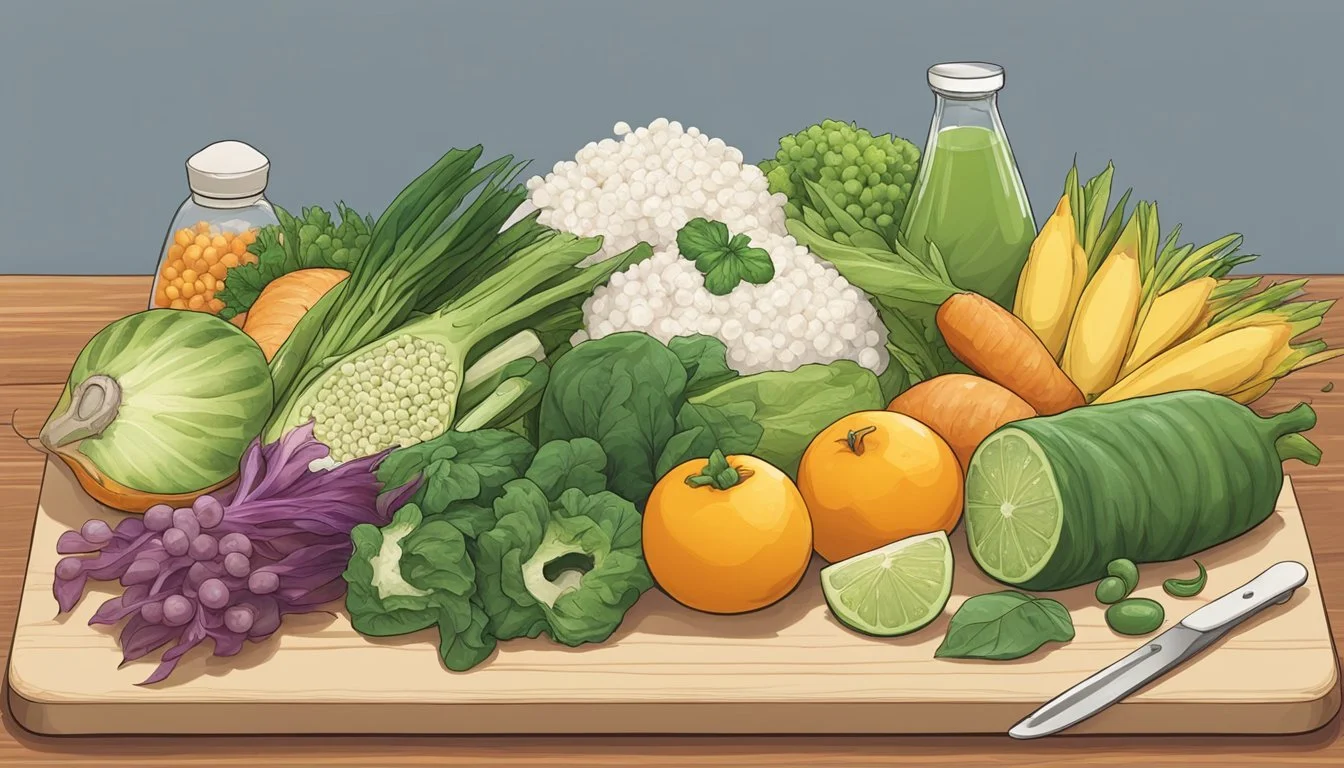Does Hijiki Go Bad? How to Tell and Store Properly
Hijiki, a type of seaweed that grows along the rocky coastlines of East Asia, is a staple in Japanese cuisine. Known for its black, shredded appearance, it is rich in dietary fiber and essential minerals such as calcium, iron, and magnesium. While hijiki is traditionally used in dishes like Hijiki Salad, it has found its way into a variety of culinary creations due to its unique texture and nutritional benefits.
When it comes to shelf life, dried hijiki has an extensive lifespan if stored correctly. In its dried form, hijiki can last for months or even years when kept in a cool, dry place away from direct sunlight. However, once rehydrated, it should be consumed within a few days and stored in the refrigerator to maintain its freshness and prevent spoilage.
Storage tips and proper handling are crucial to ensuring the quality of hijiki. Soaking the seaweed in cold water for about 30 minutes before use and storing any excess in airtight containers can extend its usability. For those interested in exploring a versatile ingredient that complements both traditional and modern dishes, keeping hijiki in peak condition is essential.
What Is Hijiki?
Hijiki is a type of sea vegetable that is especially popular in East Asian cooking. It is known for its rich nutrient content and unique culinary applications.
Hijiki's Origin and Classification
Hijiki (ヒジキ), also known scientifically as Sargassum fusiforme or Hizikia fusiformis, is predominantly found along the rocky coastlines of Japan, Korea, and China. This brown seaweed has been an integral part of the Japanese diet for centuries, known for its unique texture and flavor. It is often harvested from wild habitats rather than being farmed. This traditional food is closely associated with various health benefits and cultural beliefs in these regions.
Nutritional Content of Hijiki
Hijiki is packed with numerous essential vitamins and minerals. It has high levels of dietary fiber, which aids in digestion. Key minerals found in hijiki include iron, magnesium, calcium, and iodine. It also contains potassium and Vitamin K, contributing to overall health. The nutrients in hijiki help in promoting strong bones, balancing electrolytes, and supporting metabolic functions. This nutrient-rich profile makes hijiki a valuable addition to a balanced diet.
Culinary Uses of Hijiki
The versatile nature of hijiki allows it to be used in various culinary applications. Traditionally, hijiki is soaked, rehydrated, and then cooked. It is often incorporated into Japanese dishes like salads, onigiri, and side dishes. Common ingredients paired with hijiki include carrots, soybeans, sesame seeds, and chicken. It can also be served as a dressing or in a recipe mix. In Korean cuisine, hijiki might be found in mixed rice dishes or as part of various side dishes. Its ability to complement other ingredients makes it a staple in East Asian cooking.
Preparation and Storage
To ensure hijiki seaweed remains fresh and safe for use, it is important to store it correctly and prepare it properly before cooking. This involves both storage of the dried form and the steps required for rehydration and cooking.
How to Properly Store Hijiki
Dried hijiki should be kept in a cool, dry place. Ideally, this would be in the dried foods section of a pantry, away from direct sunlight and moisture.
Once opened, store the dried seaweed in an airtight container to prevent exposure to humidity. This helps maintain its quality and extends its shelf life.
After cooking, hijiki should be stored in the refrigerator. Place it in an airtight container and consume it within 3-4 days to ensure it remains fresh.
Steps to Rehydrate and Cook Hijiki
Before cooking, rehydrate hijiki by soaking it in cold water for about 30 minutes. This process causes the seaweed to expand significantly, often doubling or tripling in volume.
After soaking, drain the hijiki well. Rinse it under running water to remove any remaining impurities or grit.
To cook hijiki, commonly used methods include boiling it in water for several minutes. This softens the seaweed and makes it ready for use in various dishes like salads or stews.
When used in dishes, hijiki pairs well with ingredients such as carrots, konnyaku, and edamame, often seasoned with soy sauce, mirin, and dashi broth.
Health Benefits and Risks
Hijiki seaweed offers a mix of significant health advantages due to its rich nutritional profile, while also posing potential risks. Understanding both its benefits and hazards is crucial for making informed dietary decisions.
Benefits of Including Hijiki in Your Diet
Hijiki is a nutritious seaweed rich in essential vitamins and minerals. It contains high levels of calcium, iron, magnesium, and vitamin K, which contribute to its health benefits. These nutrients are vital for maintaining bone health, boosting energy levels, and supporting overall metabolic efficiency.
The fiber content in hijiki enhances digestive health by promoting regular bowel movements and preventing constipation. Additionally, hijiki has been linked to lowering cholesterol levels, which can support cardiovascular health. This seaweed is also known for its high iodine content, which is essential for the normal functioning of the thyroid gland.
Potential Risks and Controversies
Despite its health benefits, hijiki can pose risks due to its inorganic arsenic content. Consumption of hijiki has been associated with arsenic poisoning in animal studies, leading to recommendations against its use in several regions, including Asia, Australia, Europe, and the United States. Regulations advise caution when consuming hijiki to avoid adverse health effects.
The high levels of arsenic found in hijiki can potentially harm the thyroid gland and overall health. These safety concerns have led to authorities advising the public to opt for other types of seaweed, such as arame or wakame, which are considered safer alternatives. Therefore, while hijiki's mineral content offers health benefits, the arsenic risk calls for careful consideration.
Comparing Hijiki to Other Sea Vegetables
Hijiki, a popular sea vegetable, offers unique benefits compared to other seaweeds like wakame, nori, and kombu. Its distinctive features make it a valuable addition to a variety of dishes, especially in Japanese cuisine.
Hijiki vs. Other Seaweeds
Hijiki is rich in dietary fibers and minerals, distinguishing it from other seaweeds. Unlike wakame, which is often used in soups and salads for its softer texture, hijiki has a firm, twig-like consistency.
Hijiki has less pronounced brininess compared to nori and kombu. This makes it an excellent choice for those who prefer a milder sea flavor. Wakame, known for its subtle taste, complements soups, while hijiki's robust texture works well in hearty salads and rice dishes.
Due to its high iodine content, hijiki supports thyroid function. Other seaweeds like nori and wakame also provide iodine, but hijiki's nutritional profile includes significant amounts of calcium and iron, making it especially beneficial for bone health.
Why Choose Hijiki?
Choosing hijiki over other sea vegetables can enhance the nutritional value of meals. Its higher mineral content provides essential nutrients like calcium, magnesium, and iron, contributing to overall health.
Hijiki's preparation involves soaking, which rehydrates the seaweed and doubles or triples its volume. This process is different from wakame and nori, which typically require less soaking time and rehydration effort.
The unique texture of hijiki makes it versatile for various Japanese dishes like hijiki no nimono—a simmered dish with soy sauce and mirin. While other seaweeds like wakame are soft and better suited to soups, hijiki's firmness adds a pleasant chewiness to dishes.
Incorporating Hijiki into Meals
Hijiki, a nutrient-rich seaweed, can be a versatile addition to various dishes. By rehydrating hijiki, it can be used in many traditional as well as modern recipes.
Hijiki-Based Traditional Recipes
In Japanese cuisine, hijiki is commonly used in a dish known as hijiki no nimono. This traditional preparation involves simmering rehydrated hijiki with soy sauce, mirin, sugar, and sliced vegetables like carrots and lotus root. The dish is often served as a side and pairs well with rice.
Another traditional recipe is miso soup with hijiki. Adding hijiki to miso soup boosts its umami flavor. It's important to add the hijiki towards the end of cooking to ensure it maintains its texture.
Modern Twists on Hijiki Dishes
Hijiki can enhance contemporary dishes as well. For salads, mix rehydrated hijiki with greens, julienned carrots, and cucumber, then dress with a mix of soy sauce and sesame oil. For crunch, sprinkle with toasted sesame seeds.
Another modern twist is incorporating hijiki into grain bowls. Combine hijiki with brown rice, edamame, and a drizzle of sesame oil. Add a touch of soy sauce and a bit of spicy mayo for an unexpected kick. This makes for a nutritious and flavorful meal that's easy to prepare.
Conclusion
Hijiki is a popular type of edible seaweed known for its numerous health benefits. Rich in minerals like iodine, calcium, and iron, it is highly nutritious.
Proper storage of hijiki is essential to ensure it remains safe to consume. Dried hijiki can last for an extended period if kept in an airtight container in a cool, dark place.
Once rehydrated, hijiki should be consumed within a few days and kept in the refrigerator to prevent spoilage. Regular checks for unusual smells or textures can help determine if it has gone bad.
Consuming hijiki in moderation is advisable due to potential arsenic content. This ensures that one can enjoy its benefits while minimizing any risks.








